- Home
- Stephen Baxter
Evolution
Evolution Read online
Evolution
Stephen Baxter
Evolution is a collection of short stories that work together to form an episodic science fiction novel. It follows 565 million years of human evolution, from shrewlike mammals 65 million years in the past to the ultimate fate of humanity (and its descendants, both biological and non-biological) 500 million years in the future.
The primary protagonist in Evolution is evolution itself (although primates as a group constitute another protagonist). The book follows the hero’s course as it shapes surviving pre-humans into tree dwellers, remoulds a group that drifts from Africa to a (then much closer) New World on a raft formed out of debris, and confronting others with a terrible dead end as ice clamps down on Antarctica.
The stream of DNA runs on elsewhere, where ape-like creatures in North Africa are forced out of their diminishing forests to come across grasslands where their distant descendants will later run joyously. At one point, hominids become sapient, and go on to develop technology, including a universal constructor machine that goes to Mars and multiplies, and in an act of global ecophagy consumes Mars by converting the planet into its descendants. Human extinction (or the extinction of human culture) also occurs in the book, as well as the end of planet Earth and the rebirth of life on another planet. (The extinction-level event that causes the human extinction is, indirectly, an eruption of the volcano Rabaul, coupled with various actions of humans themselves, some of which are only vaguely referred to, but implied to be a form of genetic engineering which removed the ability to reproduce with non-engineered humans.) Also to be found in Evolution are ponderous Romans, sapient dinosaurs, the last of the wild Neanderthals, a primate who witnesses the extinction of the dinosaurs, symbiotic primate-tree relationships, mole people, and primates who live on a Mars-like Earth.
Evolution
by Stephen Baxter
To Sandra, again. And to the rest of us, in hope of long perspectives
Judging from the past, we may safely infer that not one living species will transmit its unaltered likeness to a distant futurity. And of the species now living very few will transmit progeny of any kind to a far distant futurity.
—Charles Darwin, On the Origin of Species by Means of Natural Selection, or the Preservation of Favoured Races in the Struggle for Life (1859)
Prologue
As the plane descended toward Darwin it ran into a cloud of billowing black smoke. The windows suddenly darkened, blocking out the Australasian summer light, and the engines whined.
Joan had been talking quietly to Alyce Sigurdardottir. But now she shifted in her seat, the belt uncomfortably tight across her bulge. This was a roomy, civilized airplane, with even the economy seats set in blocks of four or six around little tables, quite unlike the cattle truck conditions Joan remembered from a childhood spent traveling around the world with her paleontologist mother. In the year 2031, a time of troubles, not so many people traveled, and those who did were granted a little more comfort.
Suddenly, as danger brushed by, she was aware of where she was, the people around her.
Joan watched the girl sitting opposite Alyce and herself. The girl, aged around fourteen at a guess, with a silvery gadget stuck in her ear, had been viewing tabletop images of the toiling Mars lander. Even here, ten thousand meters above the Timor Sea, she was connected to the electronic web that united half the planet’s population, immersed in noise and shining, dancing images. Her hair was pale blue — aquamarine, perhaps. And her eyes were bright orange red, the color of the Martian dust that filled up the smart tabletop. Doubtless she featured many other genetic “improvements” less visible, Joan thought sourly. Cocooned in her own expanded consciousness the girl had not even registered the presence of the two middle-aged women sitting opposite her — nothing save for a slight widening of the eyes at Joan’s figure when she had sat down, a reaction which Joan could read like a book: Somebody so old got pregnant? Yuck…
But as the plane labored through the cluttered sky, the girl had turned to gaze out of the obscured window, distracted from her high-technology bubble, and the flawless skin of her brow was slightly furrowed. The girl looked scared — as well she might, Joan thought; all her genriched perfection wouldn’t help her a bit if this plane fell out of the sky. Joan felt an odd touch of meanness, envy wholly inappropriate in a woman of thirty-four. Be an adult, Joan. Everybody needs human contact, genriched or not. Isn’t that the whole point of your conference, that human contact is going to save us all?
Joan leaned forward and reached out her hand. “Are you all right, dear?”
The girl flashed a smile, showing teeth so white they all but glowed. “I’m fine. It’s just, you know, the smoke.” Her accent was nasal U.S. West Coast.
“Forest fires,” Alyce Sigurdardottir said, her leathery face creased into a smile. The primatologist was a slender woman of about sixty, but she looked older than that, her face deeply lined. “That’s all it is. The seasonal fires in Indonesia, and the Australian east coast; they last for months now, every year.”
“Oh,” the girl said, not really reassured. “I thought it might be Rabaul.”
Joan said, “You know about that?”
“Everybody knows about it,” the girl said, a hint of dummy in her intonation. “It’s a huge volcanic caldera in Papua New Guinea. Just to the north of Australia, right? It’s suffered minor earthquakes and eruptions every two years or so for the past century. And in the last couple of weeks there have been Richter one earthquakes like every day.”
“You’re well informed,” Alyce said.
“I like to know what I’m flying into.”
Joan nodded, suppressing a smile. “Very wise. But Rabaul hasn’t suffered a major eruption in more than a thousand years. It would be a little unlucky if it were to come just when you happen to be within a few hundred kilometers, uh—”
“I’m Bex. Bex Scott.”
Bex — for Rebecca? — Scott. Of course. Alison Scott was one of the conference’s more high-profile attendees, a very media-friendly genetic programmer with a brace of beautifully engineered daughters. “Bex, the gunk outside the window really is from the forest fires. We aren’t in any danger.”
Bex nodded, but Joan could see that under her bluster she wasn’t reassured.
“Well,” Joan said brightly, “if we are all going to get crisped in a volcanic caldera, we ought to get to know each other first. My name’s Joan Useb. I’m a paleontologist.”
Bex said brightly, “A fossil hunter?”
“Near enough. And this lady—”
“My name’s Alyce Sigurdardottir.” Alyce extended a slim hand. “I’m pleased to meet you, Bex.”
“Sorry, but your names are kind of strange,” Bex said, staring.
Joan shrugged. “Useb is a San name — or an anglicized version; the real thing is pretty much unpronounceable. My family has deep roots in Africa, very deep roots.”
“And I,” said Alyce, “had an American father and an Icelandic mother. A military romance. Long story.”
Joan said, “We live in a mixed-up world. Humans have always been a wandering species. Names and genes scattered all over the place.”
Bex frowned at Alyce. “I know your name, I think. Chimpanzees?”
Alyce nodded. “I took over some of Jane Goodall’s work.”
Joan said, “Alyce is one of a long line of prominent female primatologists. I always wondered why women did so well in the field.”
Alyce smiled. “Isn’t that stereotyping, Joan? But, well, primate behavioral studies in the wild take — took — decades of observation, because that’s how long the animals themselves take to live out their lives. So you need patience, and an ability to observe without interfering. Maybe those are female traits. Or maybe it wa
s just nice to get away from all the usual male hierarchies in academia. The forest is a lot more civilized.”
“Still,” Joan said, “it’s a powerful tradition. Goodall, Birute Galdikas, Dian Fossey.”
“I’m the last of a dying breed.”
“Like your chimps,” said Bex, with surprising brutality. She smiled at their silence. “They’re all gone from the forests now, aren’t they? Wiped out by climate change.”
Alyce shook her head. “No, actually. It was the bushmeat trade.” Briefly she told Bex how, toward the end, she had worked in Cameroon, as the loggers had worked their way out into the virgin rain forest, and the hunters had followed.
“Wasn’t it illegal?” Bex asked. “I thought all those old species were protected.”
“Of course it was illegal. But bushmeat was money. Oh, the locals had always taken apes. A gorilla was prestige meat; if your father-in-law visited, you couldn’t give him chicken. But when the European loggers arrived, it got much worse. Bushmeat actually became a faddish food.”
The black hole theory of extinction, Joan thought: all life, everything, ultimately disappears into the black holes in the centers of human faces. But what next? Will we keep on eating our way out through the great tree of life until there’s nothing left but us and the blue-green algae?
“But,” said Bex reasonably, “there are still chimps and gorillas in the zoos, right?”
“Not all the species made it,” Alyce said. “Even the populations we did save, like the common chimps, don’t breed well in captivity. Too smart for that. Look: The chimps are our closest surviving relatives. In the wild they lived in families. They used tools. They mounted wars. Kanzi, the chimp who learned a little sign language, was a bonobo chimp. Did you ever hear of her? And now the bonobos are extinct. Extinct. That means gone forever. How can we understand ourselves if we never understood them?”
Bex was listening politely, but she looked distant. She has grown up with such earnest lectures, Joan thought. It must all mean little or nothing to her, echoes of a world vanished before she was even born.
Alyce subsided, the old frustration showing in her face. And meanwhile the plane continued to limp through the smoky sky.
To break the slight tension — she hadn’t meant to lecture this girl, only to distract her — Joan changed the subject. “Alyce studies creatures that are alive today. But I study creatures from the past.”
Bex seemed interested, and in response to her questions Joan told her how she had followed the example of her own mother, and about her work, mostly out in the desert heartlands of Kenya. “People don’t leave many fossils, Bex. It took me years before I learned to pick them out, tiny specks against the soil. It’s a tough place to work, dry as a bone, a place where all the bushes have thorns on them to keep you from stealing their water. After that you return to the lab and spend the next few years analyzing the fragments, trying to learn more of how this million-year-dead hom lived, how she died, who she was.”
“Hom?”
“Sorry. Hominid. Fieldwork slang. A hominid is any creature closer to Homo sap than the chimps — the pithecines, Homo erectus, the Neandertals.”
“All from bits of bone.”
“All from the bone, yes. You know, even after a couple of centuries’ work, we have dug up no more that two thousand individuals from our prehistory: two thousand people, that’s all, from all the billions who went before us into the dark. And from that handful of bones we have had to try to infer the whole tangled history of mankind and all the precursor species, all the way back to what happened to our line after the dinosaur-killer comet.” And yet, she thought wistfully, lacking a time machine, the patient labor of archaeology was all there was, the only window into the past.
Bex was starting to look distant again.
Joan remembered a trip she had taken to Hell Creek, Montana, when she was about this girl’s age, thirteen or fourteen. Her mother had been working there because it was a famous dinosaur-extinction boundary site. You could see traces of the huge event that had ended the dinosaur era, there in the rocks, in a layer of gray clay no thicker than her hand; it was the Cretaceous-Tertiary boundary clay, laid down in the first years after the impact. It was full of ash, the fallout of a huge disaster.
And underneath the clay, one day, her mother had found a tooth.
“Joan, this isn’t just a tooth. I think it’s a Purgatorius tooth.”
“Say what?”
Her mother was big, bluff, her face coated with sweat and dust. “Purgatorius. A dinosaur-era mammal. Found it right under the boundary clay.”
“You can tell all that from a tooth?”
“Sure. I mean, look at this thing. It’s a precise piece of dental engineering, already the result of a hundred and fifty million years of evolution. It’s all connected, you see. If you’re a mammal you need specialized teeth so you can shear your food more rapidly, because you have to fuel a faster metabolism. But if your mother produces milk, you don’t need to be born with your final set of teeth; the specialist tools can grow in place later. Didn’t you ever wonder why you had milk teeth? Joan, a lot of people are going to care a great deal about this. You know why? Because it’s a primate. This little scrap could be all that’s left of the most remote ancestor of you and me — and everybody alive — and the chimps and gorillas and lemurs and—”
And so on. The usual lecture, from the great Professor Useb. Joan, at age thirteen, had been a lot more interested in spectacular dinosaur skulls than ratty little teeth like this. But still, something about it had stuck in her mind. And, in the end, such moments had shaped her life.
“That’s the point of the conference, you see, Bex,” Alyce was saying. “It’s a synthesis. We want to pull together the best understanding we have of how we got here, we humans. We want to tell the story of humankind. Because now we have to decide how we are going to deal with the future. Our theme is the globalization of empathy.”
That was true. The real purpose of the conference, known only to Joan, Alyce, and a few close colleagues, was to found a new movement, establish a new way of thinking, a new approach that might actually stave off the human-induced extinction event.
Bex shrugged. “You think anybody’s going to listen to a bunch of scientists? No offense. But nobody has so far.”
Joan forced a smile. “No offense taken. We’re going to try anyway. Somebody has to.”
“And there’s no point in all that stuff anymore, is there? Your archaeology.”
Joan frowned. “What do you mean?”
Bex clapped her hands over her mouth. “I shouldn’t say anything. My mother will be furious.” Her Martian eyes were bright.
Alyce had withdrawn into herself again; she gazed out of the window at the billowing debris of forest fires a thousand kilometers away.
Suppose I threw you down the strata, back into time, Joan’s mother had said to her. After just a hundred thousand years you’d lose that nice high forehead of yours. Your upright-walker legs would be gone after three or four million years. You’d grow your tail back after twenty-five million years. After thirty-five million, you’d lose the last of your ape features, like your teeth; after that you’d be a monkey, child. And then you’d keep on shrinking. Forty million years deep you’d look something like a lemur. And eventually -
Eventually, she would be a little ratty thing, hiding from dinosaurs.
Sometimes she had been allowed to sleep in the open, in the cool air of the badlands. The Montana sky was huge and crammed with stars. The Milky Way, a side-on view of a giant spiral galaxy, was a highway across the night. She would lie on her back, gazing up, imagining the rocky Earth had vanished, its cargo of fossils and all, and that she was adrift in space. She wondered if that little Purgatorius critter would have seen the same sky. Had the stars swum about the sky, across sixty-five million years? Did the Galaxy itself turn, like some huge pinwheel in the night?
But tonight, she thought, the smoke from the volcano wo
uld hide any stars.
ONE
Ancestors
CHAPTER 1
Dinosaur Dreams
Montana, North America. Circa 65 million years before present.
I
At the edge of the clearing, Purga crept out of a dense patch of ferns. It was night, but there was plenty of light — not from the Moon, but from the comet whose spectacular tail spread across the cloudless sky, washing out all but the brightest stars.
This scrap of forest lay in a broad, shallow lowland between new volcanic mountains to the west — the mountains that would become the Rockies — and the Appalachian plains to the east. Tonight the damp air was clear; but often mists and fogs blew in from the south, born over the great inland sea that still pushed deep into the heart of North America. The forest was dominated by plants that could extract moisture from the air: Lichen coated the gnarled bark of the araucaria trees, and even the low magnolia shrubs dripped with moss. It was as if the forest had been coated with a layer of thick green paint.
But everywhere the leaves were soured, the moss and ground cover ferns browned. The rains, poisoned by gases from the great volcanic convulsion to the west, had been hard on plants and animals alike. It wasn’t a healthy time.
Still, in the clearing, dinosaurs dreamed.
The thick night dew glistening from their yellow-black armor, ankylosaurs had gathered in a defensive circle, their young at the center. In the gentle Cretaceous air, these cold-blooded giants stood like parked tanks.
In the milky light Purga’s large black eyes had fixed on a moth. The insect sat on a leaf, brown wings folded, fat and complacent. With an efficient lunge Purga caught her prey in her paws. She severed off the wings with a couple of nips of her tiny incisors. Then, with a noise like the crunch of a tiny apple, she began to munch with relish at the moth’s abdomen. For this brief moment, with food in her mouth, Purga found a scrap of contentment in her crowded, difficult life.

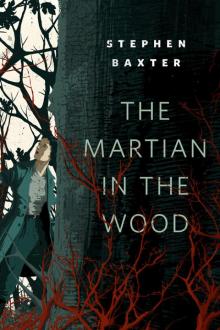 The Martian in the Wood
The Martian in the Wood THE H-BOMB GIRL
THE H-BOMB GIRL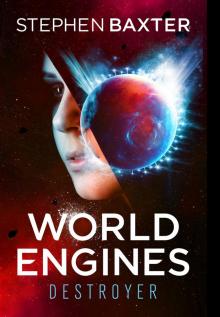 World Engine
World Engine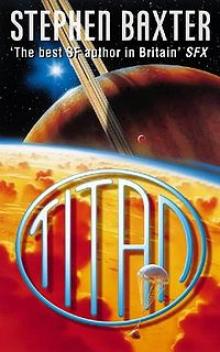 Titan n-2
Titan n-2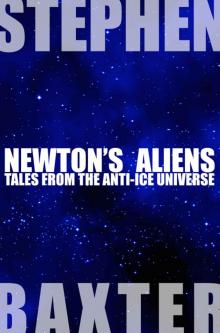 Newton's Aliens: Tales From the Anti-Ice Universe
Newton's Aliens: Tales From the Anti-Ice Universe Exultant
Exultant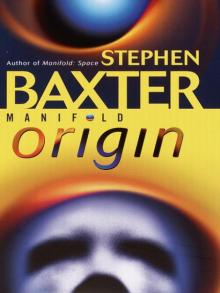 Manifold: Origin
Manifold: Origin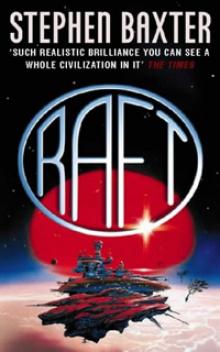 Raft xs-1
Raft xs-1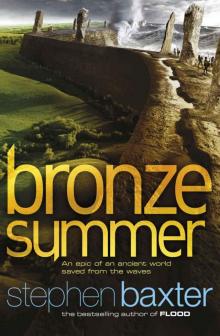 Bronze Summer n-2
Bronze Summer n-2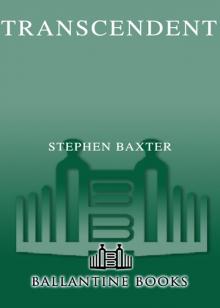 Transcendent
Transcendent Stone Spring
Stone Spring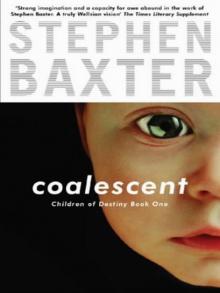 Coalescent
Coalescent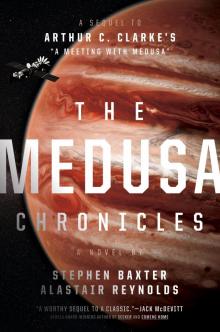 The Medusa Chronicles
The Medusa Chronicles Origin m-3
Origin m-3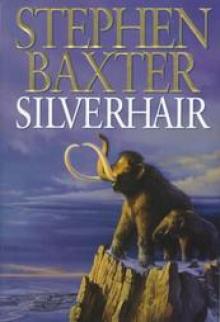 Silverhair tm-1
Silverhair tm-1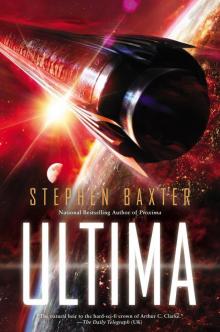 Ultima
Ultima Voyage n-1
Voyage n-1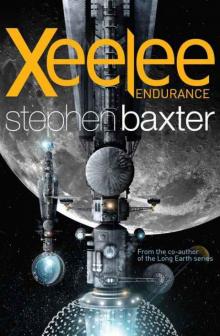 Xeelee: Endurance
Xeelee: Endurance Space m-2
Space m-2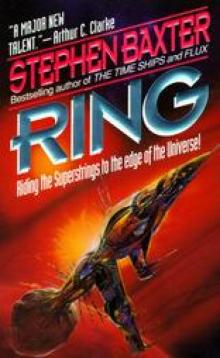 Ring xs-4
Ring xs-4 Raft
Raft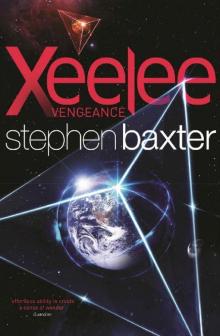 Xeelee: Vengeance
Xeelee: Vengeance Iron Winter n-3
Iron Winter n-3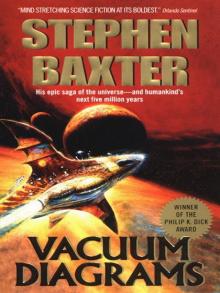 Vacuum Diagrams
Vacuum Diagrams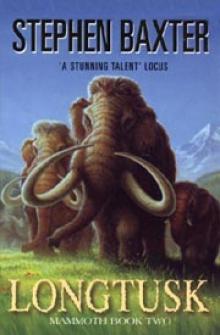 Longtusk tm-2
Longtusk tm-2 Proxima
Proxima Evolution
Evolution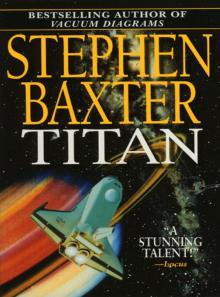 Titan
Titan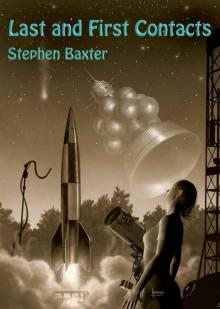 Last and First Contacts (Imaginings)
Last and First Contacts (Imaginings) Emperor
Emperor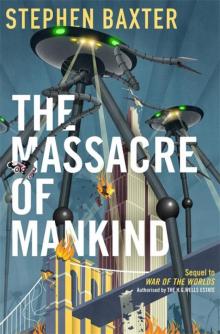 The Massacre of Mankind
The Massacre of Mankind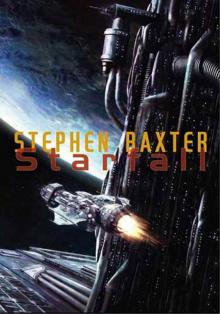 Starfall
Starfall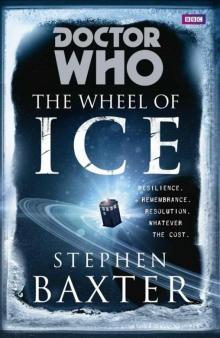 Doctor Who - The Wheel of Ice
Doctor Who - The Wheel of Ice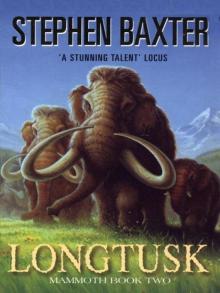 Longtusk
Longtusk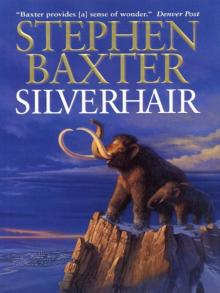 Silverhair
Silverhair Conqueror tt-2
Conqueror tt-2 Flood
Flood Flood f-1
Flood f-1 Emperor tt-1
Emperor tt-1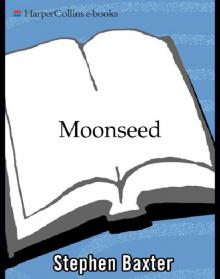 Moonseed
Moonseed Conqueror
Conqueror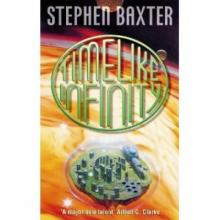 Timelike Infinity xs-2
Timelike Infinity xs-2 The Ghost Pit
The Ghost Pit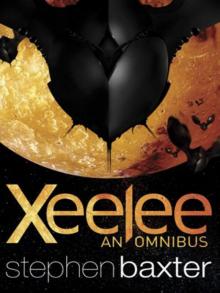 Xeelee: An Omnibus: Raft, Timelike Infinity, Flux, Ring
Xeelee: An Omnibus: Raft, Timelike Infinity, Flux, Ring Weaver tt-4
Weaver tt-4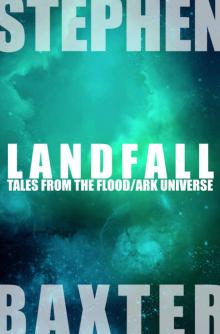 Landfall: Tales From the Flood/Ark Universe
Landfall: Tales From the Flood/Ark Universe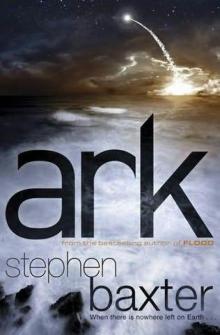 Ark
Ark Emperor: Time’s Tapestry Book One
Emperor: Time’s Tapestry Book One Space
Space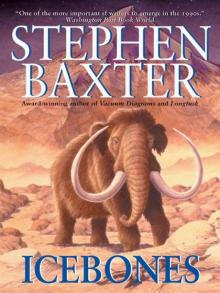 Icebones
Icebones Manifold: Space
Manifold: Space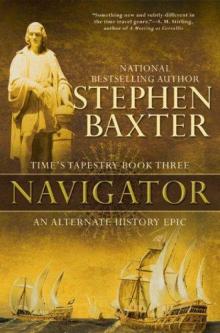 Navigator
Navigator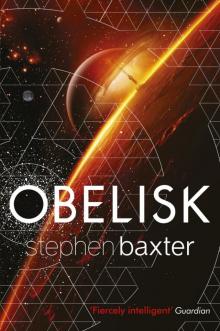 Obelisk
Obelisk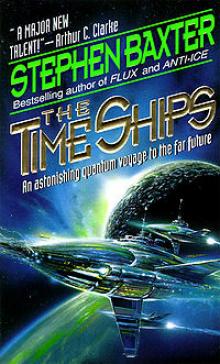 The Time Ships
The Time Ships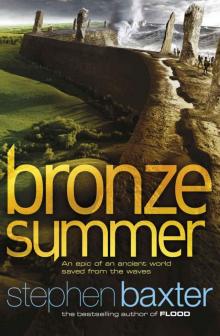 Bronze Summer
Bronze Summer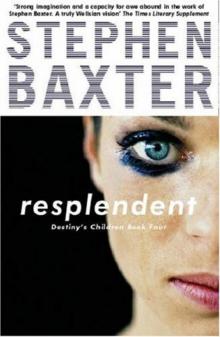 Resplendent
Resplendent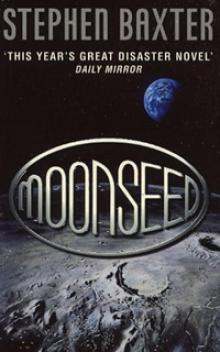 Moonseed n-3
Moonseed n-3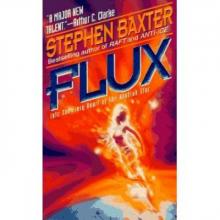 Flux xs-3
Flux xs-3 Transcendent dc-3
Transcendent dc-3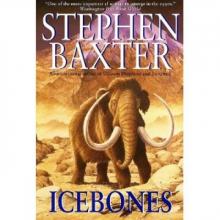 Icebones tm-3
Icebones tm-3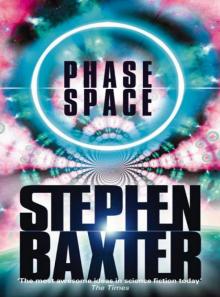 Phase Space
Phase Space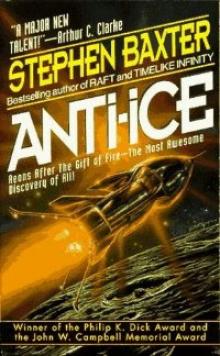 Anti-Ice
Anti-Ice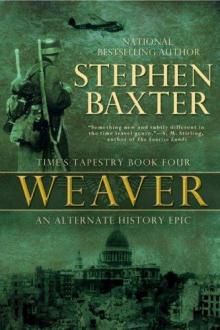 Weaver
Weaver Voyage
Voyage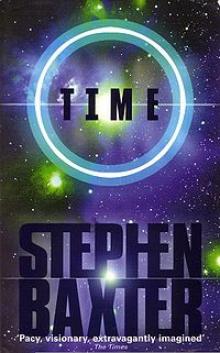 Time m-1
Time m-1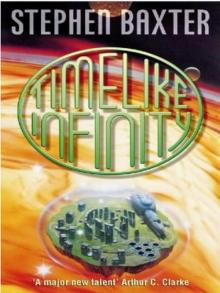 Timelike Infinity
Timelike Infinity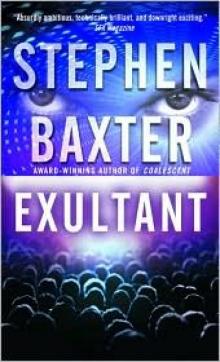 Exultant dc-2
Exultant dc-2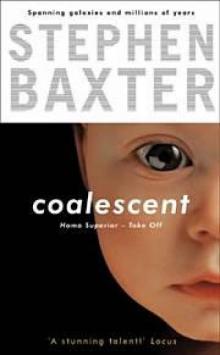 Coalescent dc-1
Coalescent dc-1 Navigator tt-3
Navigator tt-3